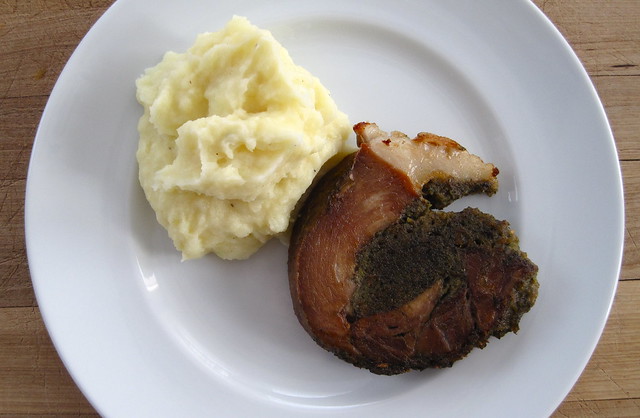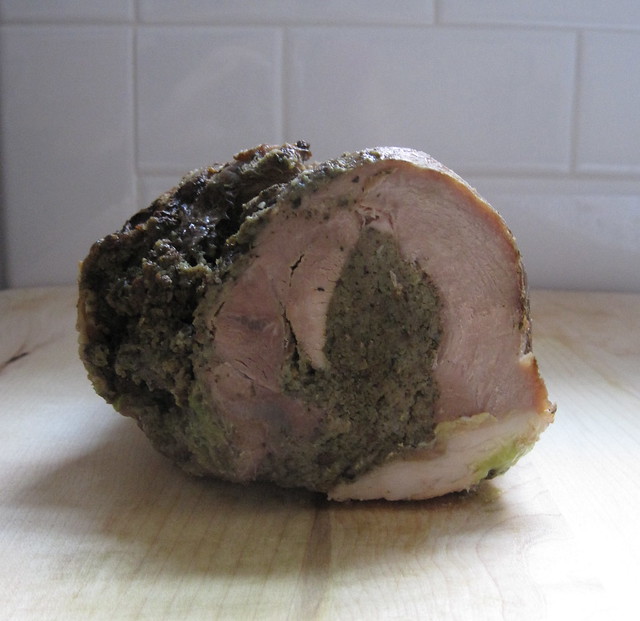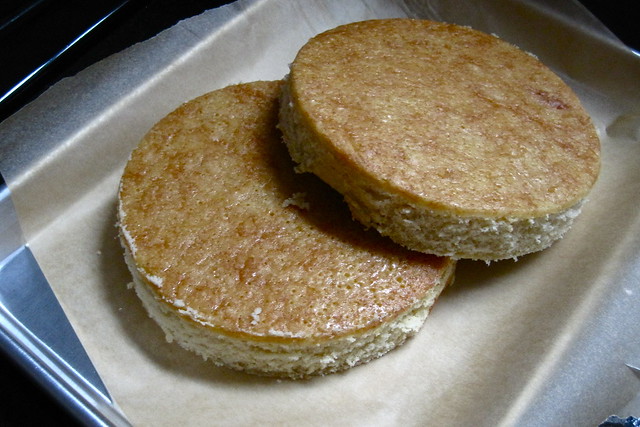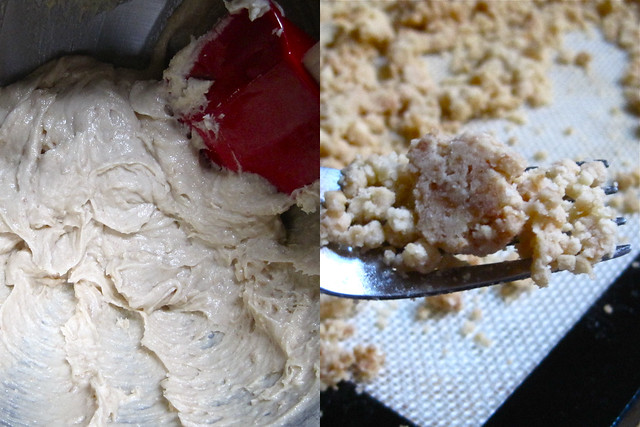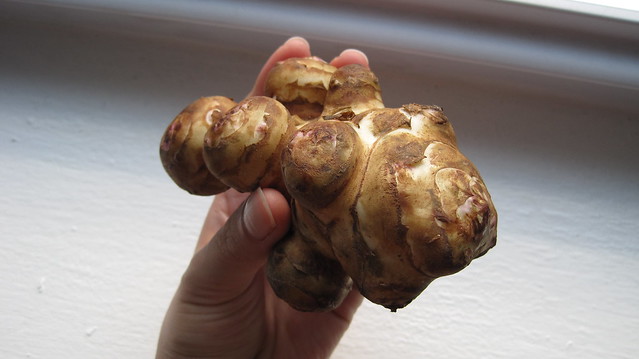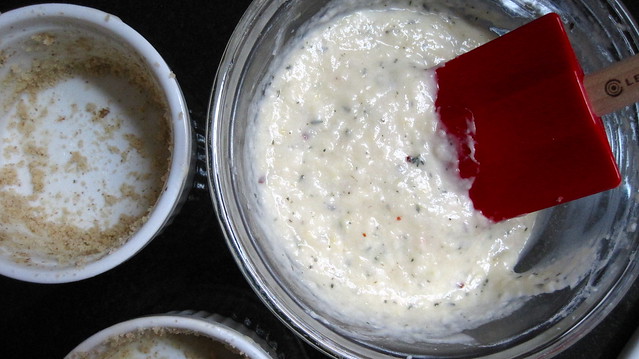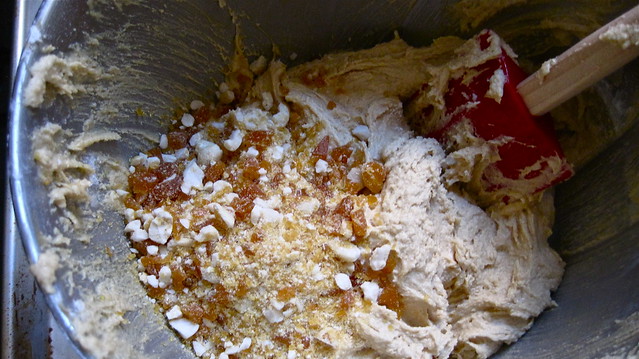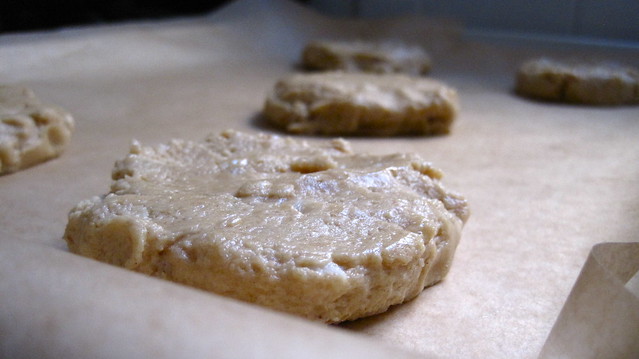The only thing traditional about Thanksgiving around here this year was the mashed potatoes. You'll have to excuse me. This was the first year in which I was in charge of everything, and I just didn't feel wedded to tradition. Maybe it has something to do with the fact that while growing up, my grandmother did it all--a twenty-pound bird, stuffing, mashed potatoes, three pies, the works. I didn't start contributing to holiday dinners until a few years ago, when I was a vegetarian. And back then, I put some decidedly non-traditional fare on the table alongside the turkey and sweet potatoes (French lentils with ricotta dumplings, this cauliflower cake). So, I guess the precedent was already set.
I envisioned a meal that would be a fun challenge for me to prepare, that would raise a few eyebrows around the table, and that would leave everyone full and happy at the end of the night. So, Thanksgiving for four went something like this:
- roasted vegetable soup: delicata squash and fennel roasted with shallots, garlic, sage and rosemary, puréed with chicken stock and a touch of cream
- Momofuku Ssäm Bar's brussels sprouts (which you can find here with Talley)
- Thomas Keller's mashed potatoes (found here)
- herb-stuffed porchetta from Tartine Bread
- blue cheese and honey ice cream, thanks to The Perfect Scoop and a shiny new ice-cream maker (Yay! Also, here is a variation on the ice cream--not quite what's in the book)
A bit of an eclectic menu, I know, and rather pungent too--but it was great. We all ate more than we should have. We groaned getting up from the table. I may not be wedded to tradition when it comes to what we eat, but eating well, maybe too well, on Thanksgiving--now that's a tradition I stand by.
Leftovers are another of those things that make Thanksgiving what it is. For me as a kid, that meant a few days' worth of hot turkey sandwiches smothered in gravy and some stuffing on the side. This year, though, it's porchetta galore.
Let me explain. When I found out that I'd be hosting Thanksgiving, I was pretty convinced at the outset that I didn't want to do a turkey. A quick flip through Tartine Bread settled it. We were going to make the Tartine porchetta! Here's what you need to know. Slow-roasted pork shoulder. Butterflied and stuffed with sourdough breadcrumbs and a veritable bouquet of aromatics. Rolled up and trussed. Roasted for a solid eight hours, basting in its own fat and juices until unbelievably tender and fragrant. Sliced and pan-seared right before serving. Brilliant. Unfussy. As the book says, "...a regal way to cook a pork shoulder."
We went to The Butcher & Larder Wednesday afternoon and came home with our prized shoulder, fresh off a hog just delivered that day. We trimmed and stuffed and rolled, then let it roast into the night. My kitchen has never smelled so good at four in the morning.
I'm convinced. Holiday feasts and porchetta were made for one another. Roast your porchetta the night before, ease yourself into sweet, pork-filled dreams, wake up and tuck your roast into the fridge to rest, and you won't have to worry about it for the rest of the day. The oven will be free for whatever else you've got up your sleeve. When the time comes, give yourself a few minutes for slicing and a quick pan-sear, then call everyone to the table. Dig into some seriously good pork.
And then there's my favourite part. Unless you've got a crowd of 8 or 10 over, there will be leftovers in abundance. Think about the sandwiches. I can assure you. This porchetta, cold, thinly sliced, will be exactly what you want when you're all cooked-out in the aftermath.
PorchettaAdapted, just a little, from Tartine Bread
Note: Wrapping. It's important to wrap your porchetta in foil well to keep in the juices and fat. I didn't do quite as good a job as I should have, so the roast had a few dry spots. Don't let it happen to you! Make ahead. I think you can get away with roasting the porchetta 24-36 hours in advance. It will keep splendidly in the refrigerator on the sheet pan you baked it on, once cooled. Because of the long cooking time and the required resting period in the refrigerator, it would be very difficult to do everything day-of. The folks at Tartine recommend roasting it overnight, and that's more or less what I did. Stuffing. All of those herbs do wonders for the pork shoulder, but I found the stuffing itself a little too herbaceous. I'd consider adding some sautéed shallot or maybe even some grated apple to the mix next time.
5 pounds boneless pork shoulder
1 teaspoon sea salt
1 bunch flat-leaf parsley, stems removed
12 fresh sage leaves
1 tablespoon fresh rosemary leaves
2 tablespoons fresh thyme leaves
1 cup fennel fronds, chopped
1/4 teaspoon red pepper flakes
1 tablespoon fennel seeds
5 cloves garlic
2 teaspoons salt
4 slices day-old rustic sourdough, each about 1-inch thick, torn into small chunks
3-5 tablespoons olive oil
Have your butcher butterfly the pork shoulder to an even thickness of about 1 inch. You should have a long sheet of meat roughly 9 by 14 inches. Lay the pork shoulder out flat on a cutting board. Season with 1 teaspoon salt.
Preheat the oven to 220 degrees F.
To make the stuffing, in a food processor, combine the parsley, sage, rosemary, thyme, fennel fronds, red pepper flakes, fennel seeds, garlic, and salt, and pulse to chop. Add the bread and 3 tablespoons olive oil and pulse to combine. If the stuffing still looks a little dry still--the consistency should be almost spreadable and paste-like--add more olive oil and pulse again.
Spread the stuffing evenly over the surface of the meat. Beginning on one side, roll the meat up tight and secure with butcher's twine.
Place the roll on a sheet of aluminium foil. Fold the sides of the foil up and around both ends of the roast and then roll the roast to enclose it in foil. This helps retain the moisture and fat while the roast is cooking. Place the roast on a baking sheet and bake until the meat is very tender, 8 to 10 hours.
Leave the aluminium foil on the roast while it cools. Refrigerate for at least 2 hours to allow the roast to firm up and hold its shape.
Remove the roast from the foil and cut off the twine. Cut the roast crosswise into slices about 1-inch thick. Heat a heavy skillet over medium heat. When the skillet is hot, add enough olive oil to cover the bottom of the pan, and add as many slices of porchetta as will fit in the pan. Cook the slices until brown, 3 to 5 minutes. Turn and cook until browned on the second side and heated through, 2 to 4 minutes. Serve.
Serves 8-10.

